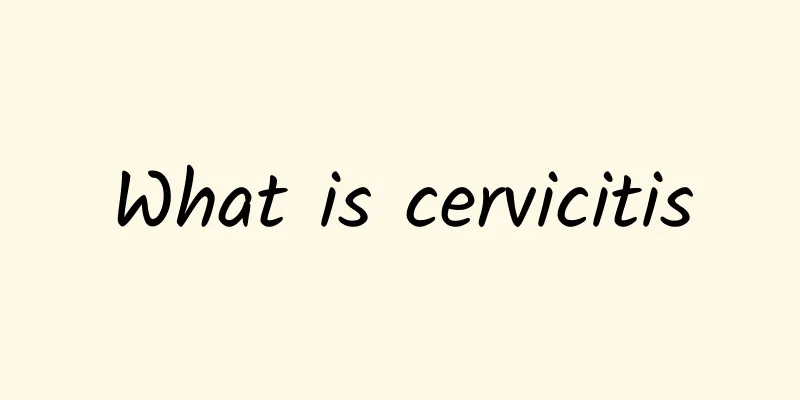How is Polycystic Ovary Syndrome Diagnosed?

|
The main clinical manifestations of PCOS are menstrual disorders, androgen excess and obesity. But how is PCOS diagnosed? Next, the editor will introduce the diagnosis method of PCOS, let us learn about it together. Diagnosis of Polycystic Ovary Syndrome 1. Blood hormone test shows abnormality. We understand that the entire ovulation process is regulated by various hormones in the body. Abnormalities in certain hormones in the blood (such as androgens, estrogens, insulin, etc.) are the key to causing polycystic ovaries. It should be noted that blood hormones should be taken within three months and do not contain any hormone drugs. The examination time should be in the early morning 3-5 days after menstruation. If amenorrhea occurs, blood can only be collected if no dominant follicle is detected by B-type ultrasound. 2. Menstrual changes Menstrual changes can be self-perceived, and there are three possible situations: No menarche. The age of menarche is older than that of the general population. Menstruation occurs a few months after menarche and the menstrual flow is very small. There was menstruation, then amenorrhea. 3. Multiple follicles on the ovaries This requires B-ultrasound, which can show that there are many soybean-sized follicles in the ovaries. Polycystic ovary syndrome symptoms Polycystic ovary syndrome (PCOS) often occurs in adolescence, and its main clinical manifestations are menstrual disorders, excess androgen and obesity. 1. Menstrual disorders It is the main symptom of polycystic ovary syndrome. The most common manifestation is scanty menstruation (35 to 6 months) or amenorrhea. After all, the money is often too little or the menstruation is scanty. It can also be manifested as irregular uterine bleeding, irregular menstrual cycle or menstrual volume. 2. Infertility Infertility is caused by the blockage of ovulation in women of childbearing age. 4. Hyperandrogenism Hyperandrogenism is the most common manifestation. There are varying degrees of hair, mainly genital hair, dense pubic hair with a male-like tendency, extending to the perianal area, groin or midline, and upper lip beard or hair around the areola. Fatty skin and acne are common, which is related to the accumulation of androgens in the body, which stimulate the exuberant secretion of sebaceous glands. 4. Obesity More than 50% of patients are obese (BMI (>25kg/m2), often with abdominal obesity (waist/hip circumference (>0.80). Obesity is associated with insulin resistance, androgen excess, increased free testosterone ratio, and leptin resistance. 5. Acanthosis nigricans The skin folds on the labia, neck, back, armpits, breasts, groin, etc. are gray-brown pigmented, symmetrical, with thickened skin and soft texture. Polycystic ovary syndrome (PCOS) is a common endocrine metabolic syndrome in women of childbearing age. It is characterized by chronic anovulation (ovulation dysfunction or loss) and hyperandrogenism (excessive secretion of male hormones in women). Its main clinical manifestations are irregular menstruation, infertility, and hyperandrogenism. Hirsutism and/or acne are the most common endocrine diseases in women. |
<<: Can premature ovarian failure in women be cured?
>>: Can I get pregnant with polycystic ovaries?
Recommend
What are the symptoms of uterine fibroids?
Many people have heard of uterine fibroids in dai...
What are the dangers of congenital absence of vagina?
What is female vaginal amenorrhea? What are the h...
Magical pine nuts have many uses! Weight loss, eye protection, anti-aging
Crisp, delicious and highly nutritious nuts are t...
Why does uterine fluid accumulate in early pregnancy?
Excluding a small amount of physiological effusio...
Hairy crabs arrive at Taichung City Health Bureau for random inspection
After the Mid-Autumn Festival, it is the best tim...
Introduction: Two common symptoms of vulvar leukoplakia
With the improvement of women's social status...
How to cure congenital cervical erosion? 3 treatment methods for congenital cervical erosion
Congenital cervical erosion is a problem that man...
How to treat and use medication for Bartholinitis
The early symptoms of Bartholinitis are usually q...
What are the clinical manifestations of vulvar leukoplakia? The most prominent symptom of vulvar leukoplakia is vulvar itching.
Vulvar leukoplakia can cause itching and dry skin...
Autumn crab feast at the hotel! Miss it and wait another year
The rich and roe-rich autumn crab dishes are curr...
What are the specific dangers of candidal vaginitis?
Many people do not know what candidal vaginitis i...
Get up before 8 o'clock and bask in the sun! Best for weight loss
Do you prefer to get enough sleep and refresh you...
What to do if you have cervical erosion? Female patients can use 4 treatments
Although cervical erosion may be a physiological ...
careful! Sucrose is less sweet but has more calories
700 ml of the popular lemon tea contains about th...
How to treat mild cervical erosion in women? 5 treatment methods for mild cervical erosion
Treatment of simple cervical erosion 1. Ironing: ...









